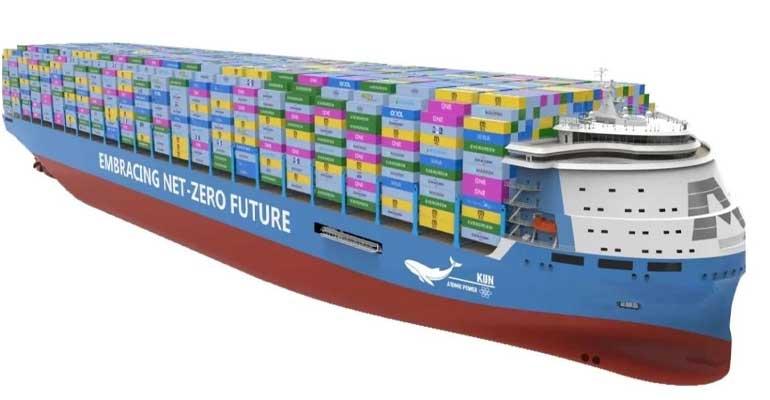The design, unveiled by China State Shipbuilding Corp’s (CSSC) Jiangnan Shipyard in Shanghai, is based on one of the shipbuilder’s existing boxship specs and, according to those working on the project, would only need modifications to the power and propulsion systems on board.
Advocates point to the many advantages. The technology of choice – molten salt reactors (MSR) – are small units which operate at high temperatures and low pressure. This, CSSC said in a statement posted on Weibo, means that they are very safe, avoiding the risk of the core melting. In the event of an accident, the core would solidify at ambient temperature, CSSC said as it revealed that its MSR design uses thorium rather than uranium.
On energy density, the figures are eye-watering. Compared with green methanol, for example, a small MSR could supply two hundred thousand times more energy, kilo for kilo.
Speaking to Seatrade Maritime News last year, Core Power’s Mikal Bøe pointed out that MSR technology gets round many of the drawbacks of alternative low- or zero-carbon fuels that are currently under development. Such fuels, he said, will require completely new global bunkering infrastructure because they have no supply chain to service international shipping. Experts claim that the cost of new bunkering facilities for future fuels will run into many billions.
Meanwhile, the low energy density of fuels under development will require larger fuel tanks on board ship, reducing space available for cargo. Quite the reverse is true of small MSRs, Bøe said, which can be fuelled for life if necessary. The fuel can then still be used in another vessel in the future. Taking up far less space, MSRs would facilitate ship designs with more cargo capacity. With more power, they could maintain faster service speeds, thereby boosting operating efficiency.
During port calls, the ships would not need to connect to shore power systems. In fact, as mini power stations in their own right, they could transfer zero-emission electricity to local power grids ashore, Bøe said. Nor would they have to spend extra time taking more fuel on board.
Surprisingly, the Jiangnan Shipyard design has been approved in principle by classification society DNV. Norway as a nation, and DNV as its classification body, have not spent much time on nuclear energy over the years since the country has vast supplies of hydroelectricity and large reserves of oil and gas.
In other countries whose navies operate nuclear-powered vessels of various types, classification societies have been closely involved over many years in drawing up regulatory frameworks for nuclear-powered assets. However, MSR technology is markedly different from the conventional pressurised water reactor installations on military assets.
Copyright © 2024. All rights reserved. Seatrade, a trading name of Informa Markets (UK) Limited.
Add Seatrade Maritime News to your Google News feed.  |

